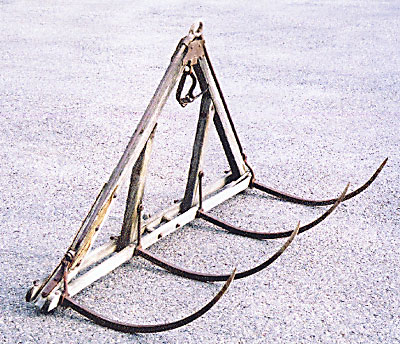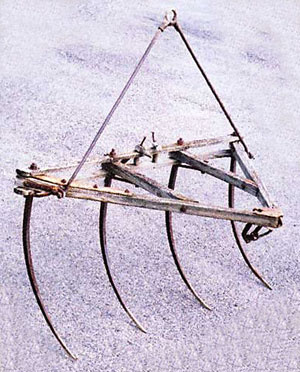 |
||
|
These steel tined beasts were great for lifting loose, and even baled, hay up onto a haystack. But they were dangerous.
 When the Jackson fork was loaded with hay it hung in the position shown above. It was held in this position by a latch at the top which was connected to a trip rope. |
|||
 The Jackson fork was lowered into the hay in this position. When the tines were pushed into the hay the steel lifting handle
was pulled down and latched. Then when the fork was lifted it rotated back and brought a load of hay with it.
There were numerous ways the Jackson fork could stab the people working with it. Derricks, and the cables threaded through their pullys, were a loose and jumpy affair. When the Jackson fork was being lowered down to the wagon, tines pointed at the guy below, the boom pole was swinging, the Jackson fork was dancing up and down on the cable, and one never knew for sure when the horse might stumble and unexpectedly drop the Jackson fork. But the greatest danger awaited the man up on the hayststack. A Jackson fork loaded with several hundred pounds of hay bent the boom pole down and stretched the cables. When it was tripped to dump the hay the empty fork jumped into the air and danced wildly about. The experienced stacker knew how to avoid the sharp tines, but if the trip rope got entangled down below and unexpectedly tripped the Jackson fork an unwary or slow reacting stacker trying to maneuver on the uneven footing of a haystack could find himself entangled with the flashing steel tines. |
|||